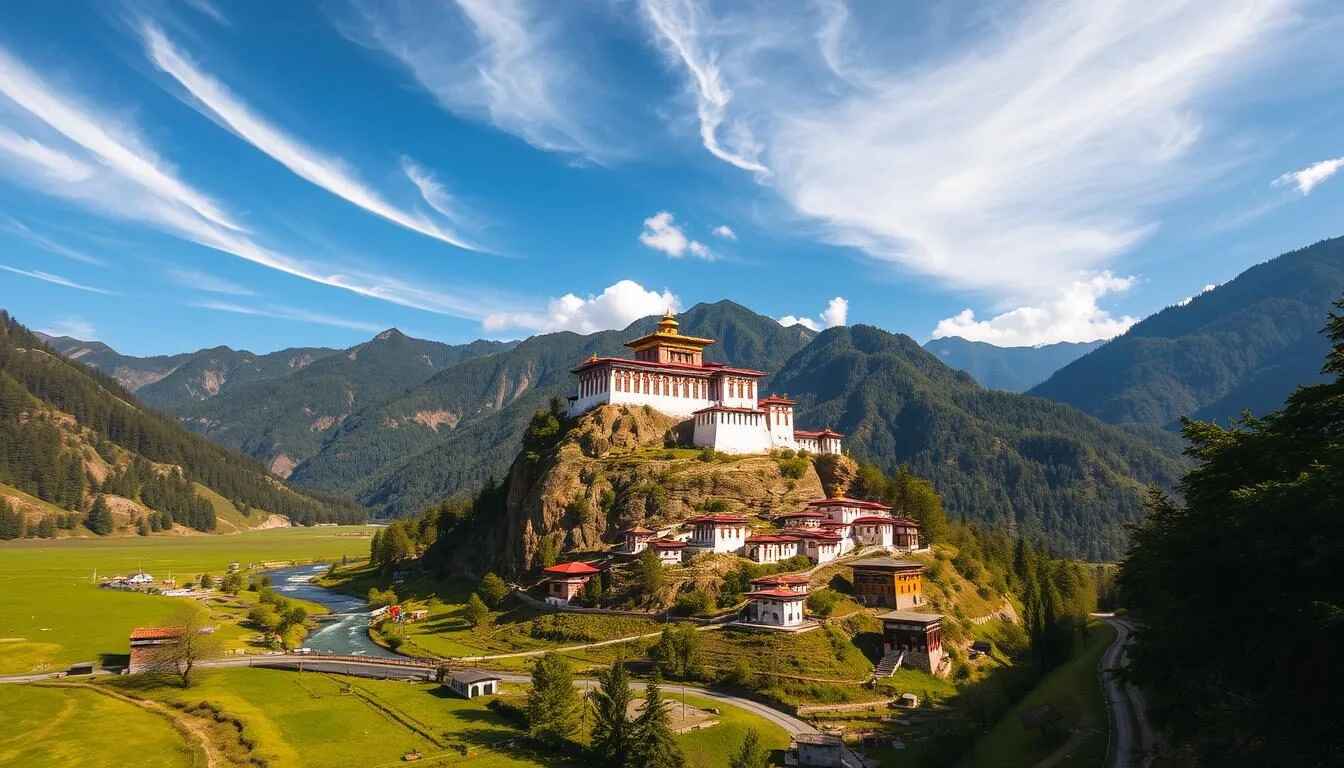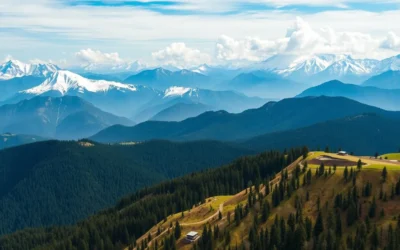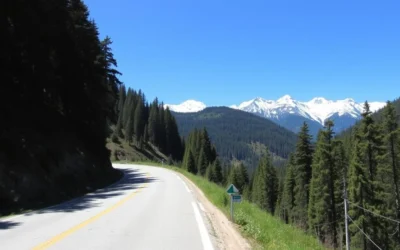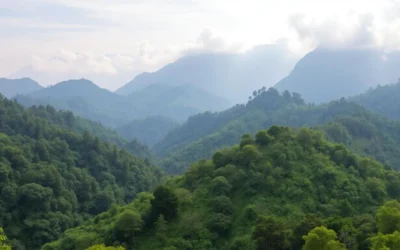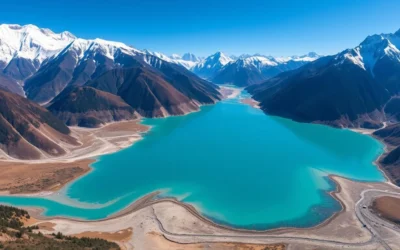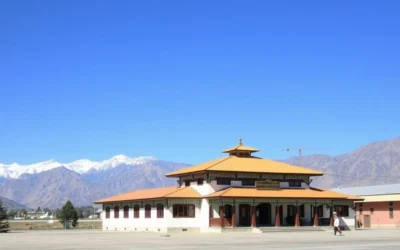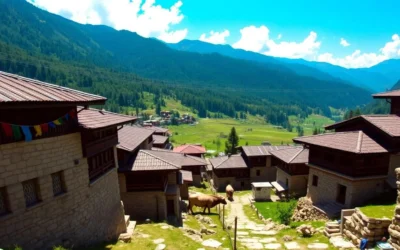✓ Accommodations✓ Flights✓ Rental Cars✓ Tours & Activities
Imagine a destination where the air is crisp, the mountains are majestic, and the culture is rich in tradition. For many travelers, this place is more than just a travel spot; it’s a journey to a world untouched by time.
You are about to embark on a journey to the Himalayan kingdom, a country that measures success not by GDP but by Gross National Happiness. Here, ancient traditions blend seamlessly with breathtaking landscapes, creating one of the world’s most unique places to visit.
As you explore this enchanting land, you’ll discover the things that make Bhutan a captivating destination. From iconic monastery hikes to cultural immersions, this guide will take you through the top experiences that will leave you forever changed.
The Magic of Bhutan: An Introduction
As you step into the enchanting world of Bhutan, you’re immediately immersed in a land of breathtaking beauty and rich cultural heritage. This small country in South Asia is a treasure trove of diverse landscapes, cultures, and experiences.
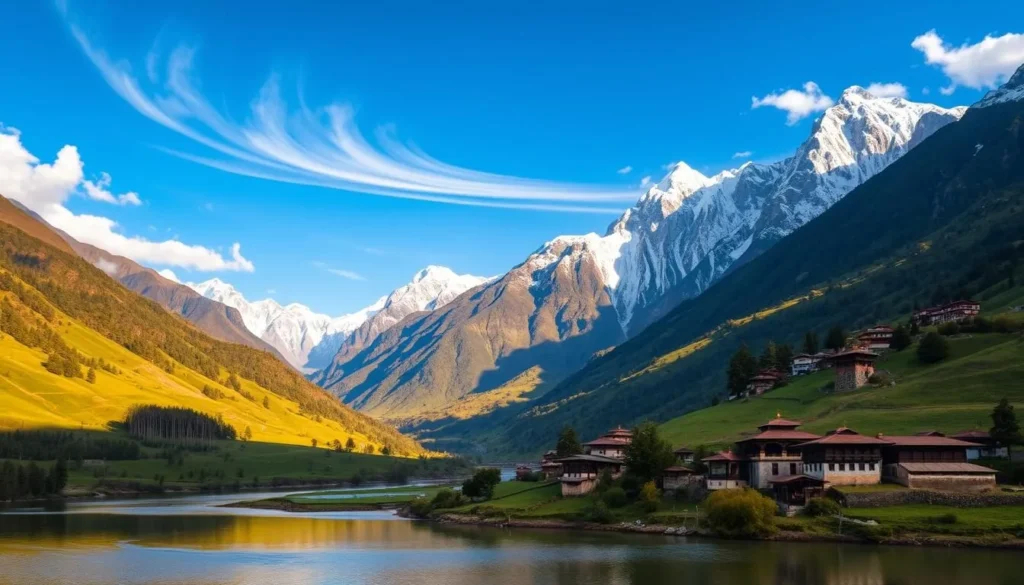
Where is Bhutan Located?
Nestled between India and China in the Eastern Himalayas, Bhutan is a landlocked country that boasts an incredible diversity of landscapes and experiences within its modest borders. The region’s unique geography, which spans from subtropical valleys to towering Himalayan peaks, creates a remarkable variety of ecosystems and climates.
You will find that the country’s diverse elevations support a wide range of flora and fauna, making it a fascinating destination for nature lovers and adventure seekers alike.
Understanding Gross National Happiness
Bhutan stands apart from the rest of the world through its commitment to Gross National Happiness, a development philosophy that prioritizes wellbeing, cultural preservation, environmental conservation, and good governance over purely economic metrics. This approach has enabled the country to maintain its unique cultural identity and pristine natural environment.
The Bhutanese way of life is deeply influenced by Buddhist principles, with monasteries, prayer flags, and religious festivals forming the backbone of daily existence for many people. As a result, travel to Bhutan is often intentional, immersive, and transformative.
| Aspect | Description | Significance |
|---|---|---|
| Cultural Heritage | Rich traditions and Buddhist practices | Preserves the country’s unique identity |
| Natural Environment | Diverse landscapes from valleys to Himalayan peaks | Supports a wide range of ecosystems and biodiversity |
| Gross National Happiness | Development philosophy prioritizing wellbeing and sustainability | Ensures a balanced approach to development and conservation |
Best Time to Visit Bhutan
Bhutan, with its pristine landscapes and rich culture, is a destination that beckons travelers throughout the year, but the best time to visit depends on your preferences. The country’s climate varies significantly across seasons, each offering unique experiences.
Seasonal Highlights
The best time to visit Bhutan largely depends on what you want to experience. Here are the highlights of each season:
- Spring (March to May) transforms the valleys into a colorful paradise with rhododendrons and jacarandas in bloom.
- Fall (September to November) brings crystal-clear skies and comfortable temperatures, ideal for trekking.
- Winter (December to February) offers a magical experience with snow-dusted mountains.
- Summer (June to August) brings lush green landscapes but also the possibility of rain.
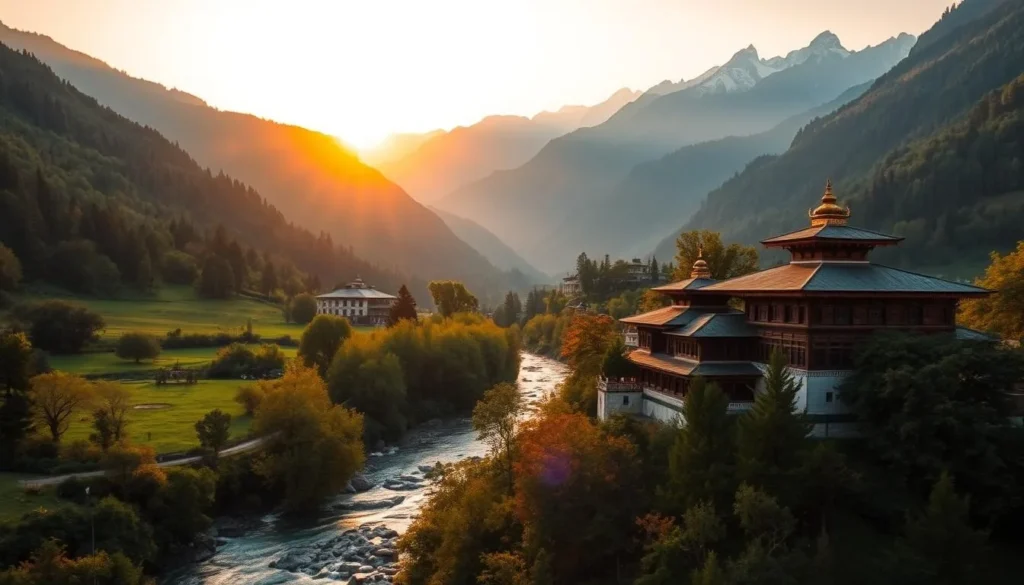
Festival Calendar
Planning your trip around Bhutan’s vibrant festival calendar can add an extraordinary cultural dimension to your journey. Events like Paro Tshechu in spring and Thimphu Tshechu in fall offer unforgettable glimpses into Bhutanese traditions, making the time to visit even more special.
By considering the seasonal highlights and festival calendar, you can plan your trip to Bhutan during the best time that suits your interests.
Hiking to Tiger’s Nest Monastery
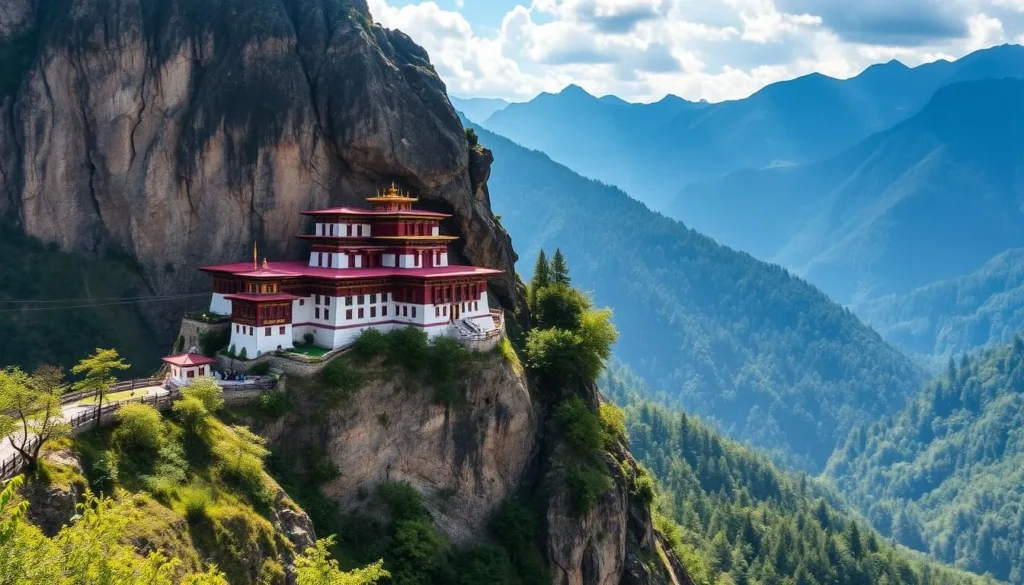
Embark on a spiritual journey to one of Bhutan’s most revered sites, Tiger’s Nest Monastery. This iconic hike is a must-do experience when visiting Bhutan, offering breathtaking views and a deep dive into the country’s rich spiritual heritage.
The Legend and History
Tiger’s Nest Monastery, also known as Taktsang Palphug, is steeped in legend and history. According to Buddhist lore, Guru Rinpoche flew to this site on the back of a tigress in the 8th century to meditate in a cave and subdue local demons. This sacred site has since become a symbol of spiritual transformation and a testament to Bhutan’s devotion to Buddhism.
Practical Tips for the Hike
The hike to Tiger’s Nest Monastery is approximately 2-3 hours uphill through picturesque pine forests adorned with colorful prayer flags. To make the most of your hike, start early around 6 AM to avoid crowds and potential afternoon rain. A tea house halfway up the trail offers spectacular views and a chance to rest. As you ascend, the air is filled with the scent of pine, and the sound of chanting monks carried on the wind.
What to See Inside
Upon reaching the monastery, you’ll discover several shrines and meditation caves, including the sacred cave where Guru Rinpoche meditated. While photography is not permitted inside the temple complex, the serene atmosphere and intricate Buddhist artifacts will leave a lasting impression. Take a moment to absorb the spiritual energy and reflect on the significance of this sacred site.
The hike to Tiger’s Nest Monastery is more than just a physical journey; it’s a spiritual odyssey that connects you with Bhutan’s rich cultural heritage. As you stand before this magnificent temple, you’ll understand why it’s considered one of the most revered sites in Bhutan.
Exploring Thimphu: Bhutan’s Unique Capital
As you wander through the streets of Thimphu, Bhutan’s captivating capital, you’ll discover a city that seamlessly blends tradition with modernity. Thimphu is the only capital in the world without a single traffic light, adding to its charm.
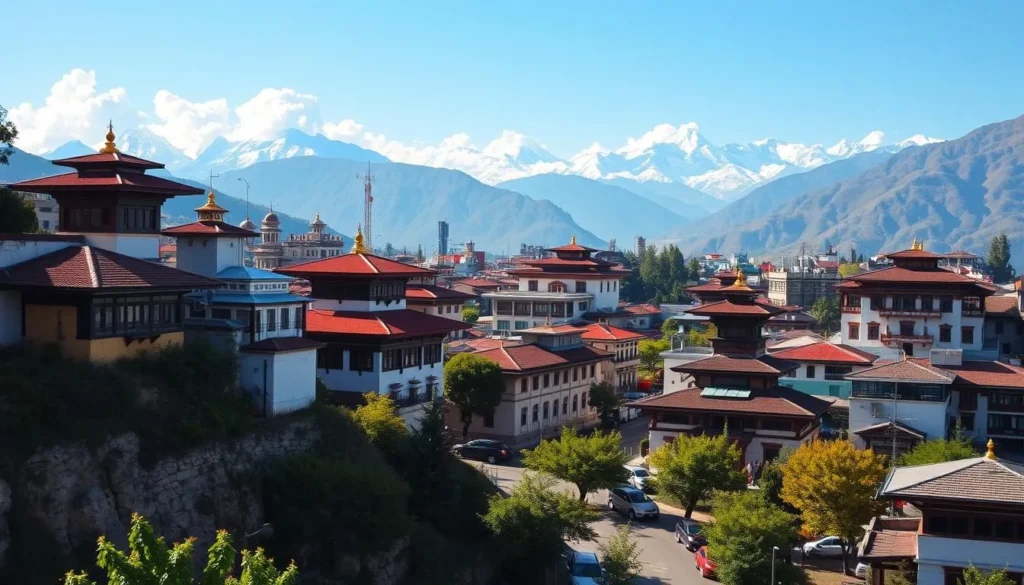
Buddha Dordenma: The Giant Golden Buddha
The massive Buddha Dordenma statue sits majestically on a hilltop overlooking the city. Housing over 125,000 smaller Buddha statues inside, it offers panoramic views of the Thimphu valley. This iconic bronze Buddha statue is a must-visit attraction.
National Memorial Chorten
The National Memorial Chorten is the spiritual heart of the capital. Locals circumambulate clockwise throughout the day, spinning prayer wheels and murmuring mantras. This beautiful display of living Buddhism is a sight to behold.
Tashichho Dzong and Local Markets
Tashichho Dzong, a stunning fortress-monastery, serves as both the government seat and the summer residence of the Je Khenpo (Chief Abbot) and his monks. Visit during Tshechu, the annual religious festival, to experience colorful masked dances and local markets.
Thimphu’s vibrant weekend market along the Wang Chhu river is not to be missed. Farmers and merchants gather to sell everything from fresh produce to handcrafted textiles. For an authentic local experience, visit the Centenary Farmers’ Market or the Folk Heritage Museum.
Experiencing the Majestic Punakha Dzong
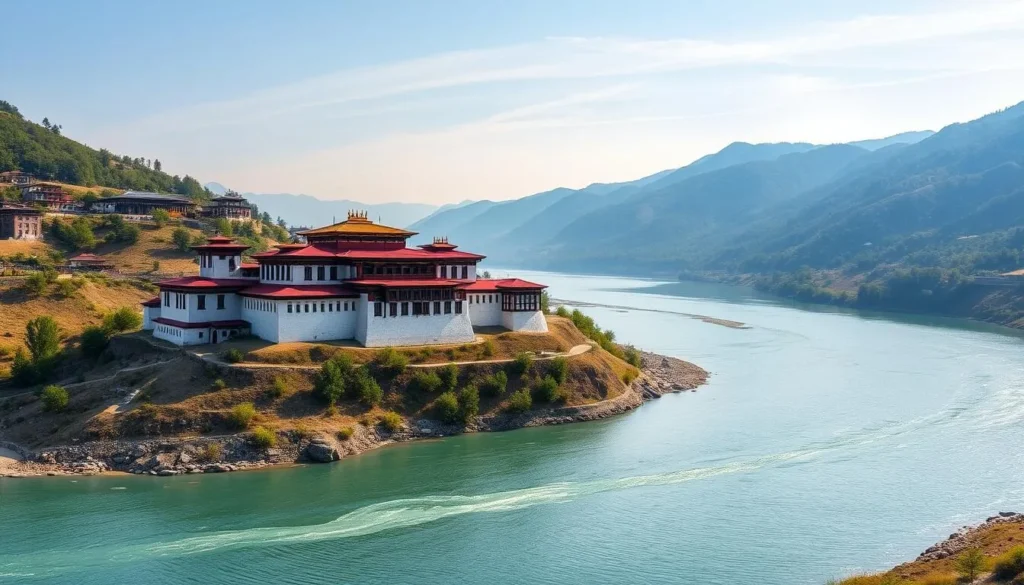
As you explore Bhutan, one of the most breathtaking experiences awaits you at Punakha Dzong. This magnificent fortress, also known as “The Palace of Great Happiness,” is a testament to Bhutan’s rich history and architectural prowess.
The Palace of Great Happiness
Punakha Dzong, officially known as Pungthang Dewachen Gi Phodrang, is the second-oldest and largest dzong in Bhutan. Built in 1637, it serves as the winter residence of Bhutan’s central monastic body. The dzong is situated at the confluence of the Po Chhu and Mo Chhu rivers, creating a picturesque landscape. In spring, the surrounding jacaranda trees bloom with purple flowers, adding to the dzong’s beauty.
Crossing the Punakha Suspension Bridge
Just a short walk from the dzong, you’ll find the Punakha Suspension Bridge spanning 160 meters across the Po Chhu river. This iron-chain suspension bridge connects the town of Punakha with the rest of the valley and offers spectacular views of the dzong and surrounding landscape. Crossing the bridge can be an exhilarating experience, especially when the wind picks up and the bridge sways.
The valley surrounding Punakha Dzong is fertile and enjoys a warmer climate, making it an ideal place for rice cultivation and tropical fruits. Visiting Punakha Dzong is a great way to experience the natural and architectural beauty of Bhutan.
Soaking in the Views at Dochula Pass
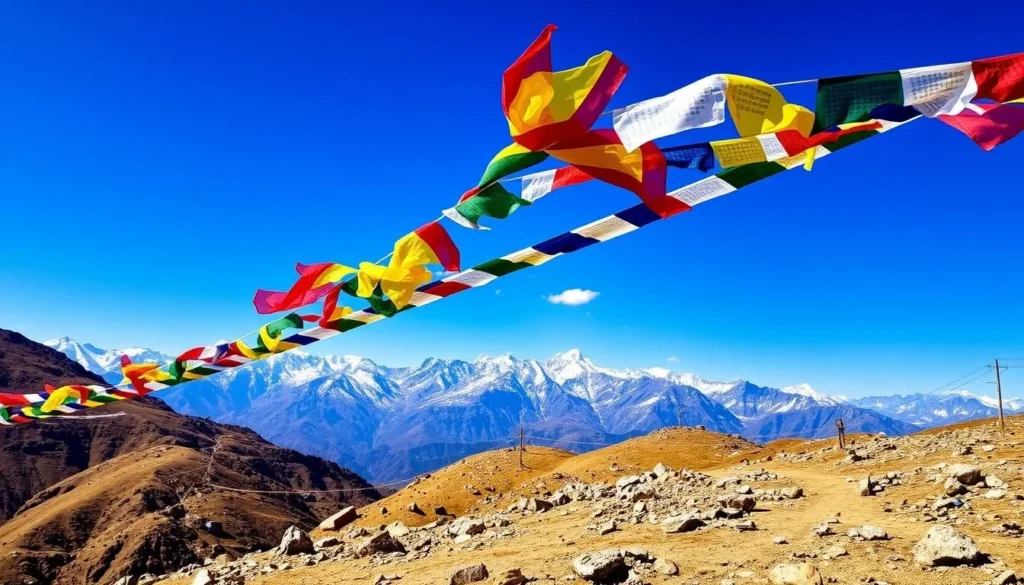
At 10,000 feet, Dochula Pass is not just a mountain pass but a spiritual haven between Paro and Thimphu. Located on the winding road between Thimphu and the Punakha Valley, this mountain pass is more than just a scenic stop — it’s a sacred space suspended between sky and earth.
The 108 Chortens and Their Meaning
The 108 white chortens, known as “Druk Wangyal Chortens,” stand solemnly in the clouds, built to honor Bhutanese soldiers who died in a 2003 conflict. These chortens create a striking visual against the mountain backdrop. The number 108 holds significant spiritual meaning in Buddhism, representing the 108 earthly desires that humans face.
Himalayan Panorama and Photography Tips
On a clear morning, 22 snow-capped Himalayan peaks unveil themselves in perfect procession across the horizon, including Gangkhar Puensum, the world’s highest unclimbed mountain. For the best photography opportunities, visit in the early morning when the light is soft and the skies are most likely to be clear. Don’t miss capturing the colorful prayer flags fluttering in the mountain breeze, carrying prayers and blessings to all sentient beings according to Buddhist belief.
As you stand at Dochula Pass, the views are breathtaking, with the mist often creating an ethereal atmosphere. Whether you’re witnessing the sunrise over the Himalayas or simply taking in the serene environment, Dochula Pass is a must-visit place in Bhutan. The pass offers a moment of pure Himalayan majesty, where the wind carries the soft rustle of prayer flags.
Discovering Paro Valley’s Cultural Treasures
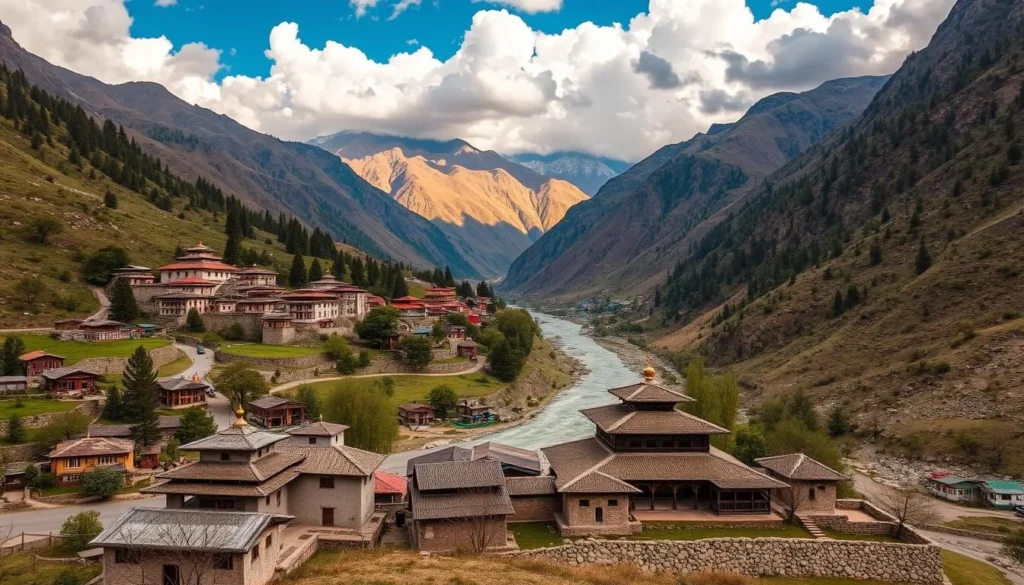
As you explore the cultural treasures of Paro Valley, you’ll discover a rich tapestry of history and tradition. The valley is not just a gateway to Bhutan but a cultural treasure trove in its own right, featuring traditional architecture, terraced rice fields, and sacred sites.
Rinpung Dzong and Its History
Rinpung Dzong, also known as Paro Dzong, is a 17th-century monastery that sits next to the Paro Chhu River. This fortress is a stunning example of traditional Bhutanese dzong architecture, with imposing walls, intricate woodwork, and colorful Buddhist paintings.
National Museum of Bhutan
The National Museum of Bhutan is housed in the ancient Ta Dzong watchtower above Rinpung Dzong. The museum showcases a fascinating collection of Bhutanese artifacts, including traditional masks, weapons, thangkas, and natural history exhibits, offering insights into the country’s rich cultural heritage.
Kyichu Lhakhang: One of Bhutan’s Oldest Temples
Kyichu Lhakhang is one of Bhutan’s oldest and most sacred temples, built in the 7th century by the Tibetan king Songtsen Gampo. This ancient temple contains relics, statues, and an orange tree said to bear fruit year-round, making it a significant pilgrimage site.
The charming town of Paro offers a glimpse into everyday Bhutanese life, with its traditional shopfronts, local markets, and gentle pace. Visitors can wander through Paro’s streets, visit local cafes, and browse handicraft shops for authentic souvenirs.
Bhutan: Best Things to Do – Top Picks for Culture Lovers
As you immerse yourself in Bhutan’s vibrant culture, you’ll discover a world of rich traditions and spiritual practices. Bhutan’s culture is a core component of its Gross National Happiness (GNH) framework, and the most important manifestations of Bhutanese traditions can be seen in the cultural festivals that the country celebrates.
Witnessing a Traditional Tshechu Festival
Witnessing a traditional Tshechu festival is one of the most authentic things to do in Bhutan. These festivals, held throughout the year in different dzongs across the country, are not tourist performances but genuine religious events where locals gather in their finest traditional attire to gain merit and celebrate their cultural heritage.
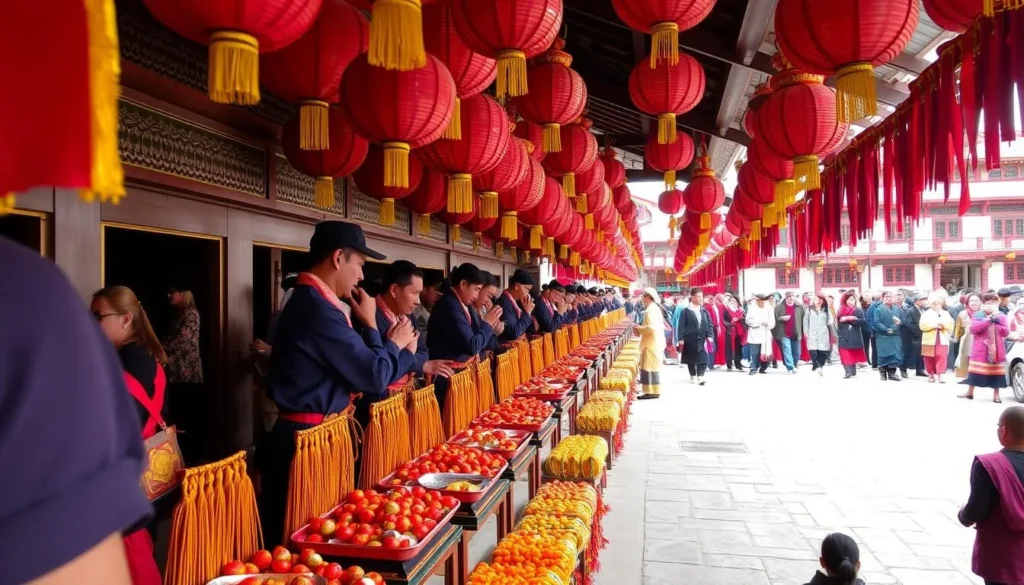
Trying Your Hand at Archery: Bhutan’s National Sport
Archery, Bhutan’s national sport, combines skill, social bonding, and spiritual elements. You can try your hand at archery at designated ranges in Thimphu and other towns, though be prepared for good-natured laughter from locals as you discover just how challenging this ancient sport truly is.
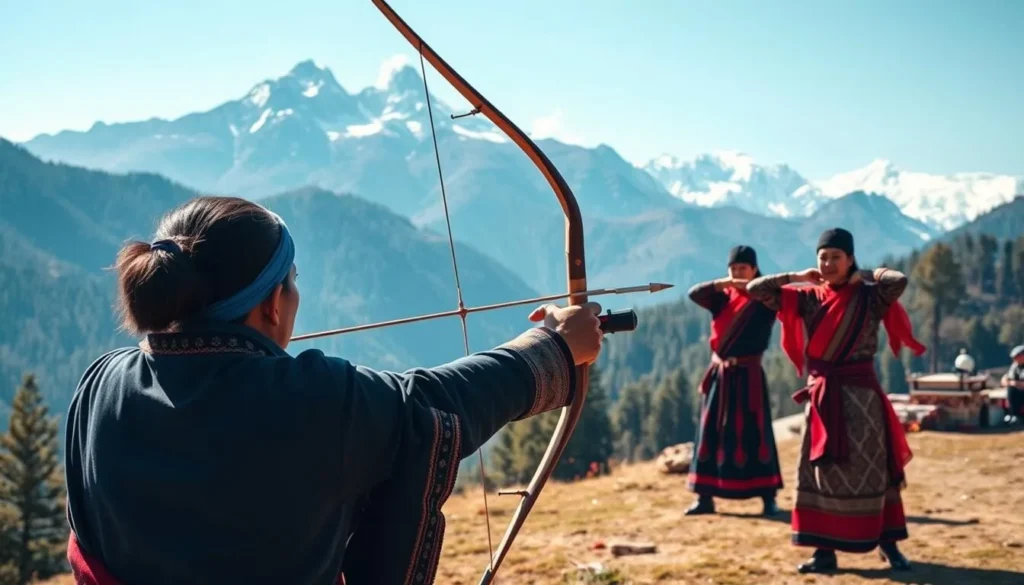
For culture lovers, Bhutan offers extraordinary experiences that showcase the country’s rich traditions, spiritual practices, and unique way of life. Other cultural experiences not to miss include visiting the National Institute for Zorig Chusum in Thimphu, where students learn the 13 traditional arts and crafts, watching monks debate at a monastery, or participating in a traditional Bhutanese cooking class during your trip.
By engaging in these cultural activities, you’ll gain a deeper understanding of Bhutan’s values and way of life. Whether you’re watching a Tshechu festival, trying your hand at archery, or exploring the local arts and crafts, you’ll be immersed in the rich cultural heritage of Bhutan.
Natural Wonders and Wildlife Encounters
As you explore Bhutan, you’ll discover a world of natural wonders and wildlife encounters that will leave you in awe. Bhutan’s commitment to environmental conservation has created a haven for wildlife and pristine natural landscapes, with over 70% of the country covered in forests and a constitutional mandate to maintain at least 60% forest coverage.
Phobjikha Valley and the Black-Necked Cranes
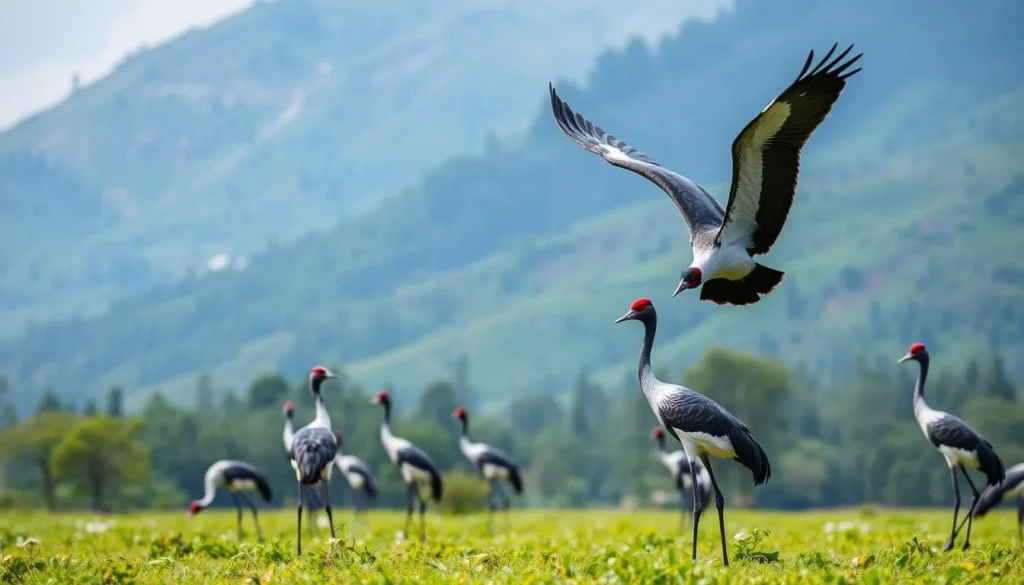
Phobjikha Valley, also known as Gangtey Valley, is a stunning glacial valley and critical conservation area, famous for hosting the endangered black-necked cranes that migrate from Tibet each winter. The arrival of these sacred birds is celebrated with the Black-Necked Crane Festival in November, featuring cultural performances, conservation awareness programs, and a chance to see these majestic birds in their winter habitat. You can witness the serene beauty of the valley and its inhabitants, making it a unique experience.
Jigme Dorji National Park: Biodiversity Hotspot
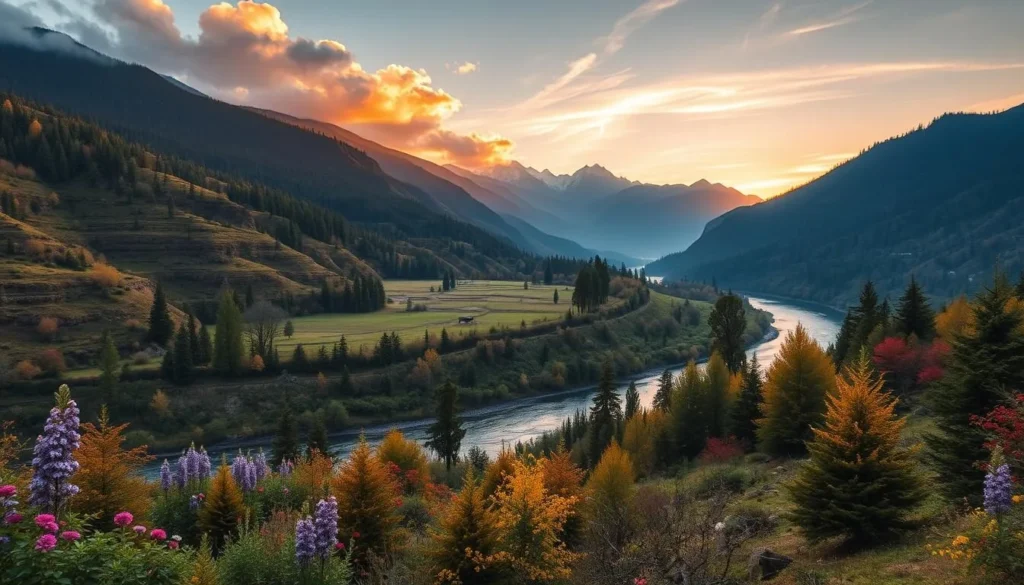
Jigme Dorji National Park, Bhutan’s second-largest protected area, spans an incredible range of ecosystems from subtropical forests to alpine meadows and is home to endangered species like snow leopards, Bengal tigers, and red pandas. The park’s dramatic mountain landscapes include peaks over 7,000 meters, glaciers, and pristine rivers, making it a paradise for trekkers looking to experience Bhutan’s natural beauty on trails like the popular Jomolhari trek. You can explore the park’s diverse wildlife and ecosystems, making your trip to Bhutan a memorable one.
Adding a wildlife or nature component to your Bhutan trip provides a perfect balance to cultural experiences, allowing you to appreciate the country’s commitment to living harmoniously with the natural world. With its rich biodiversity and pristine landscapes, Bhutan offers a unique opportunity to connect with nature.
Authentic Bhutanese Experiences
As you immerse yourself in the serene landscapes of Bhutan, you’ll discover that the authentic experiences are what truly make your trip unforgettable. To truly understand Bhutan, you need to experience the authentic aspects of daily life that connect visitors with the Bhutanese way of being.
Traditional Hot Stone Bath for Relaxation
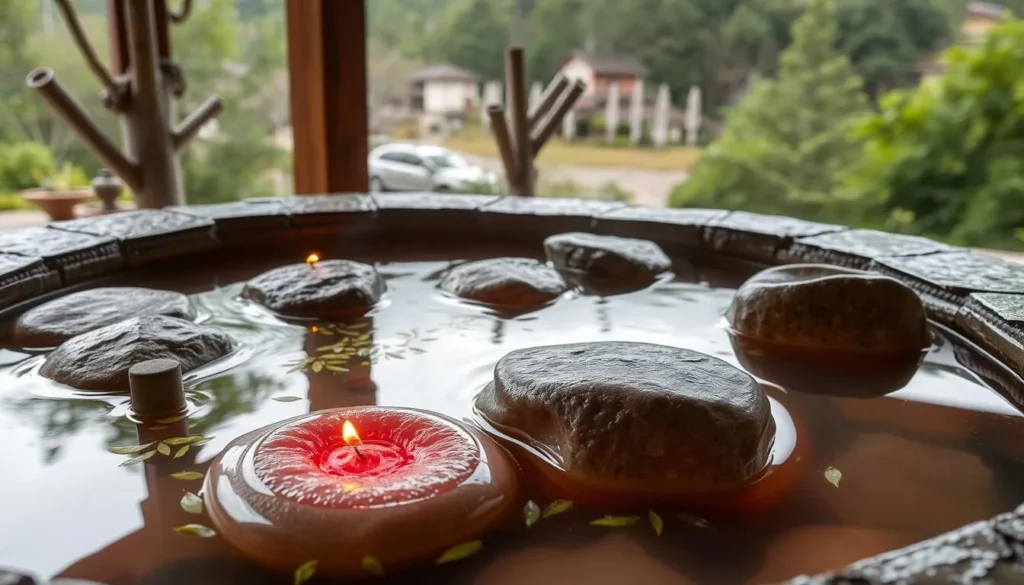
The traditional hot stone bath, known as Dotsho, is a uniquely Bhutanese healing practice. River stones are heated until red-hot and placed in water infused with Artemisia leaves, creating a therapeutic mineral bath that soothes tired muscles. This is the perfect way to relax after hiking. The Bhutanese use hot stone baths to treat ailments such as arthritis, hypertension, joint pain, and stomach disorders.
Sampling Ema Datshi and Local Cuisine
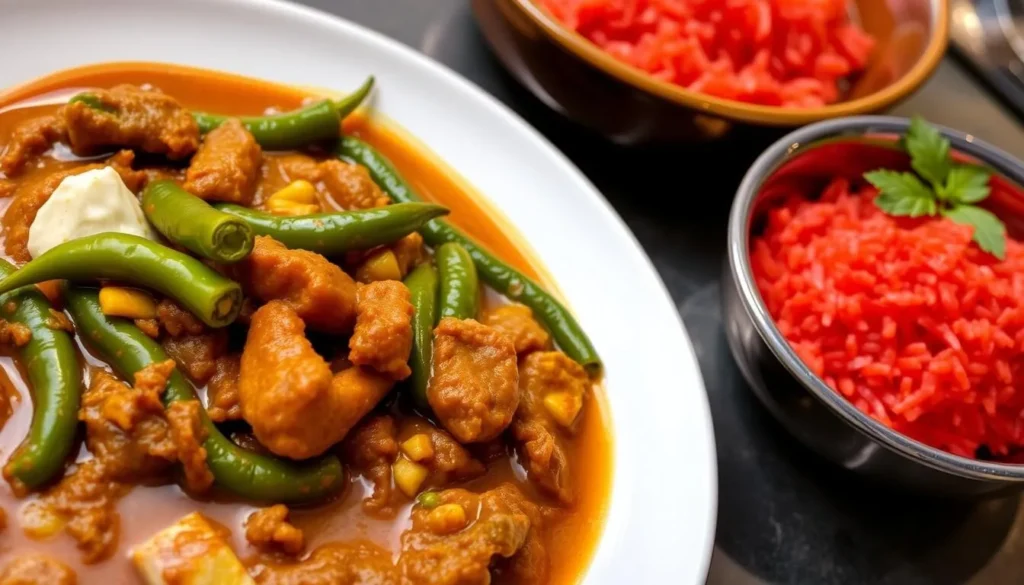
Sampling Ema Datshi, Bhutan’s fiery national dish of chilies and cheese, offers insight into the Bhutanese love of spicy food. The dish varies in heat level depending on the chilies used and is typically served with red rice grown in the high-altitude valleys. Many farmhouses and resorts offer the opportunity to participate in traditional Bhutanese activities like butter tea making and traditional weaving demonstrations.
Connecting with local people through homestays or guided village walks provides a deeper understanding of Bhutanese values and the practical application of Gross National Happiness in everyday life. These authentic experiences often become the most memorable parts of a trip to Bhutan, offering insights into a way of life that prioritizes contentment, community, and spiritual wellbeing over material acquisition.
Essential Travel Tips for Your Bhutan Adventure
As you plan your trip to Bhutan, it’s essential to understand the unique aspects of traveling in this Himalayan kingdom. Bhutan is known for its commitment to sustainable tourism, and there are several key factors to consider when organizing your visit.
Understanding the Sustainable Development Fee
The Sustainable Development Fee (SDF) is a daily fee of $100 per person that most international visitors must pay. This fee is a cornerstone of Bhutan’s “high value, low volume” tourism policy, aimed at funding free healthcare and education for Bhutanese citizens while preserving the country’s environment and culture. By paying this fee, you’re contributing directly to the well-being of the local community and the conservation of Bhutan’s natural beauty.
Transportation Around Bhutan
Transportation within Bhutan typically involves private vehicles with a driver, as public transportation is limited and road conditions can be challenging. When traveling between valleys on winding mountain roads, having a knowledgeable driver is not only safer but also provides an opportunity to enjoy the scenic views. Your tour operator will arrange for transportation as part of your travel package, ensuring a smooth and comfortable journey.
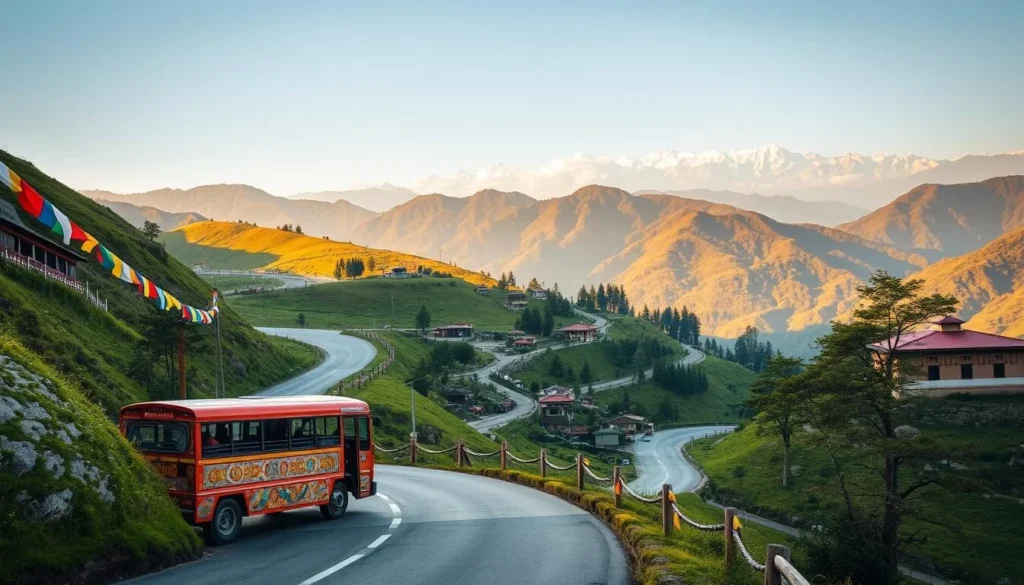
Accommodation Options from Traditional to Luxury
Bhutan offers a range of accommodation options to suit different preferences and budgets. From traditional farmhouse homestays that allow you to experience local culture firsthand to luxury resorts like Amankora and Six Senses, there’s something for everyone. Most visitors opt for comfortable 3-4 star hotels that blend Bhutanese architecture with modern amenities, providing a unique and comfortable stay. Working with a licensed tour operator will help you choose the best accommodation that fits your travel plans.
By understanding these essential travel tips, you’ll be better prepared to enjoy your trip to Bhutan and make the most of your time in this beautiful country. With the right guide and travel arrangements, your experience will be both memorable and enriching.
Conclusion: Why Bhutan Will Capture Your Heart
As you conclude your journey through Bhutan, you’ll find that this Himalayan kingdom has left an indelible mark on your heart. The country’s commitment to preserving its culture and environment is evident in its pristine landscapes and vibrant cultural heritage. You’ll remember the serene Buddhist temples, the majestic Punakha Dzong, and the iconic Tiger’s Nest Monastery perched on a cliff face.
The memories of your time in Bhutan will be filled with the warmth of its people, the beauty of its mountain vistas, and the tranquility of its prayer flags fluttering in the wind. Whether you spent your days hiking through rhododendron forests or exploring ancient dzongs, Bhutan offers a unique travel experience that prioritizes collective happiness over material wealth.
As you return home, you’ll carry with you the lessons of Bhutan’s Gross National Happiness and the realization that there’s more to life than the material. The experience will linger, reminding you of the Buddha Dordenma statue and the chanting of monks in centuries-old monasteries. Bhutan will remain in your heart, a destination that has given you a new perspective on what truly matters in life.
The above is subject to change.
Check back often to TRAVEL.COM for the latest travel tips and deals.
